Everybody at one point or another in their life has had bulletin board but most of us eventually move on to something more high tech – something to write on, leave notes, or fill in calendar information. In our daily lives, those of us with children almost always have a bulletin board in the kitchen or some space right off the garage (sometimes called a ‘mud room’). Most architects and architectural firms have a bulletin board or tack board in their office (not in the mud room). I’m not talking about a white board, I’m talking about a good old-fashioned tack board … you know, the kind where you tack stuff.
Architects are decidedly low-tech when it comes to our tack boards, something that probably develops out of our time in school where every surface is covered in homasote, a sound absorbing, self-healing pressed paper product that is available in 4′ x 8′ panels in either 3/8″ and 1/2″ thicknesses. It’s a great product, and at $22 (approx) per sheet, it’s about as cost effective a tack surface as you’re likely to find. I thought it would be interesting to take a look at our bulletin board, one of the most important resources in our office.
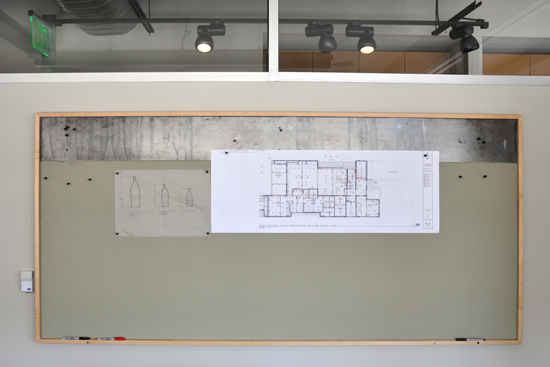
This is a view of the tack board in my office – it’s 7′-6″ long and 3′-6″ tall – plenty of room to two full size sheets of drawings side by side. Looking at the picture you can see that there are two materials on my tack board (at least I hope you saw that). The darker shiny band at the top is untreated 1/8″ thick plate steel and the light neutral colored portion below is 1/4″ thick WallTalkers tac-wall surface. It could have been the aforementioned homasote but we wanted to dress this board up just a tad since it is in our main conference room.
.
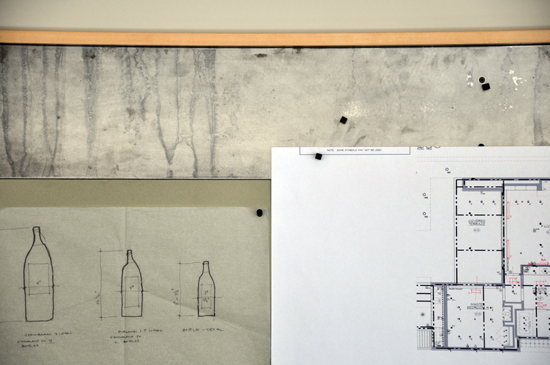
I added the plate steel to the top so that I could have the option of using magnets to pin up some items instead of push pins – not everything wants to have a pin hole created in it. We can give presentations to the clients using this tack wall and don’t have to worry about damaging photographs that the client may have brought in. This little detail added about $40 to the construction cost of this board but the level of flexibility it provided has been extremely valuable
.
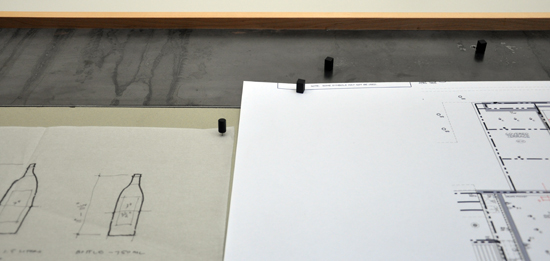
I left the plate steel unfinished because I like the look and I’m not worried about it rusting. This tack board has been in heavy use for over 4 years now and looks just as it did the first day we hung it on the wall. The entire thing is mounted to a piece of 1/2″ plywood with a 1.5″ x .75″ piece of solid stock maple trim. We routed out a pencil groove at the bottom to hold things like magnets, push pins and yes, even pens.
.
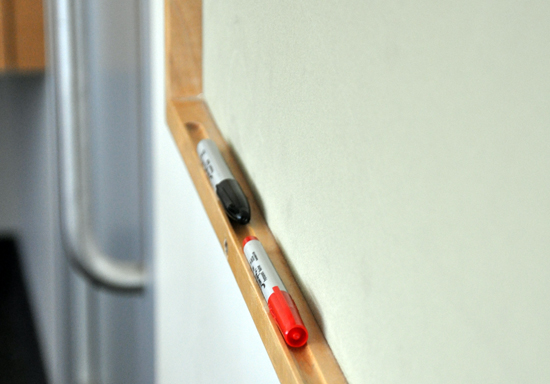
If you would like to show the tack board in your office, send me a picture and I’ll amend this post and add it here for everyone to see. I should thank BUILD llc for sticking the idea for this post up on their site.
Thanks BUILD llc – you guys are the best. Let me know when my work area is ready for occupation.
.
.
.
.
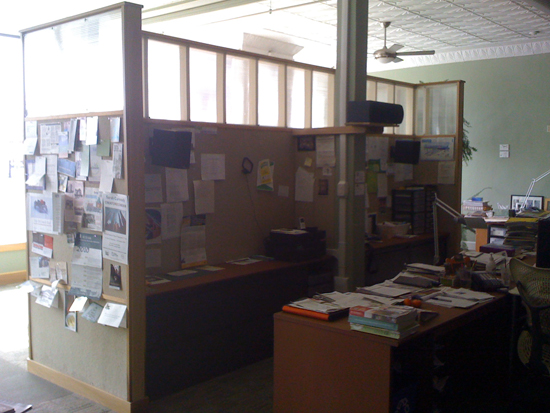
This image comes from Patrick Ladendecker (twitter @Lifeasinterns)
This is a homasote wall separating the conference room from the work area and from the look of things, it is well loved. Thanks for sending in your image Patrick! (ps – are those speakers I see? Another studio necessity)
.
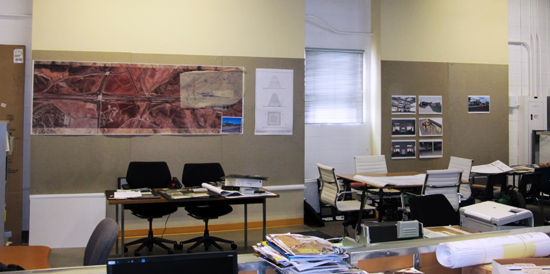
This image comes from Preston Croxford with ARCHIPLEX Group
This is also a wall covered with several pieces of homasote and you can see that there is a in-studio conference table adjacent to one of the areas where the wall is covered making it easy to reference drawings, pictures and sketches. Thanks for sending us your image Preston.
.
.
.
